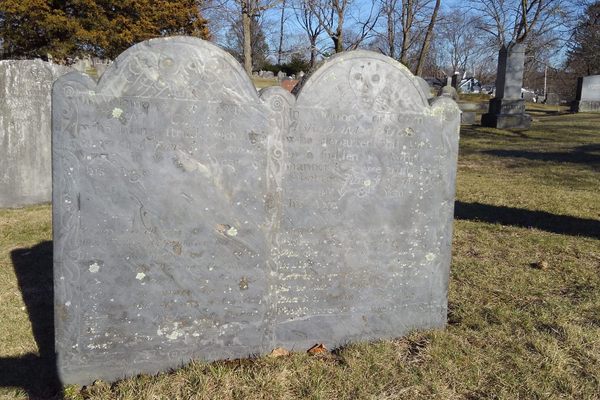About
The Spartans idealized order throughout life, but also in death. Spartan funerary customs had the deceased laid to rest in unmarked graves that mingled with the living inside the city walls.
Marked gravestones were reserved only for special cases, such as men who fell in battle or women who died while holding religious office (though some scholars suggest women who died in childbirth may have also been awarded such memorials). These were the only citizens deemed important enough to have their names engraved for posterity, on tombstones that were typically lined up along busy promenades for everyone to see. Such heroic tombs became public monuments that reinforced the values and traditions of the formidable city-state.
Today, in the Magoula district of Sparta, ancient tradition mingles with modern design in the local cemetery. Designed by architects Charilaos and Sophia Polychronopoulos in 1964, the space was part of a series of inspired public works fostered by Georgios Sainopoulos, a two-term mayor of Sparta in the 1960s and 1970s.
One source of inspiration for the cemetery's aesthetic might have been Sainopoulos’s own experience attending the 1952 Olympic games in Helsinki, where the Finnish capital’s Nordic modernism was on full display. Indeed, the concrete arches at the entrance to the Spartan cemetery resemble Finnish architect Alvar Aalto’s wave-like designs. It is said that the concrete “waves” within the cemetery might be symbolic of the ups and downs we experience in life.
Compared to the plain graves of the past and the marble-heavy cemeteries throughout Greece, Magoula's memorials come in a wide array of unique shapes and materials, including pyramids, metal carvings, statues, and busts. There are even some symbols that reflect a closer affinity to the Western European funerary traditions. Overall, the cemetery shows a sense of unusual individuality.
Just as ancient Spartan graves became monuments to civic pride and sacrifice, Sainopoulos’s own underground vault honors the former mayor, who died in 2010. Accessed through a flight of steps in a specially reserved area of the cemetery, the memorial is a tribute to Sainopoulos’s contributions to everyday Spartan life.
Related Tags
Know Before You Go
This is an active cemetery. Please behave with proper decorum when visiting: Be quiet, dress appropriately, and do not disturb mourners.
Community Contributors
Added By
Published
August 19, 2020
Sources
- www.sainopouleio.gr
- www.lakonistas.gr
- https://explorabilia.co.uk/2020/07/16/modernist-necropolis/
- https://deathinantiquity.wordpress.com/2016/05/17/funerary-practices-and-civic-ideology-in-sparta-and-the-peloponnese/
- https://www.jstor.org/stable/40379113
- https://books.google.com/books?id=SyZoVB491_0C&pg=PA287&lpg=PA287&dq=%22To+inscribe+the+name+of+the+dead+upon+the+tomb+was+not+allowed,+unless+it+were+that+of+a+man+who+had+fallen+in+war,+or+that+of+a+woman+who+had+died+in+sacred+office.%E2%80%9D&source=bl&ots=oRxANq48lg&sig=ACfU3U2vvR8CrMBEKFMzq2ulXSJnTWfIww&hl=en&sa=X&ved=2ahUKEwjhnpKX24zrAhXelnIEHbKdAYoQ6AEwAnoECAgQAQ#v=onepage&q=%22To%20inscribe%20the%20name%20of%20the%20dead%20upon%20the%20tomb%20was%20not%20allowed%2C%20unless%20it%20were%20that%20of%20a%20man%20who%20had%20fallen%20in%20war%2C%20or%20that%20of%20a%20woman%20who%20had%20died%20in%20sacred%20office.%E2%80%9D&f=false








































